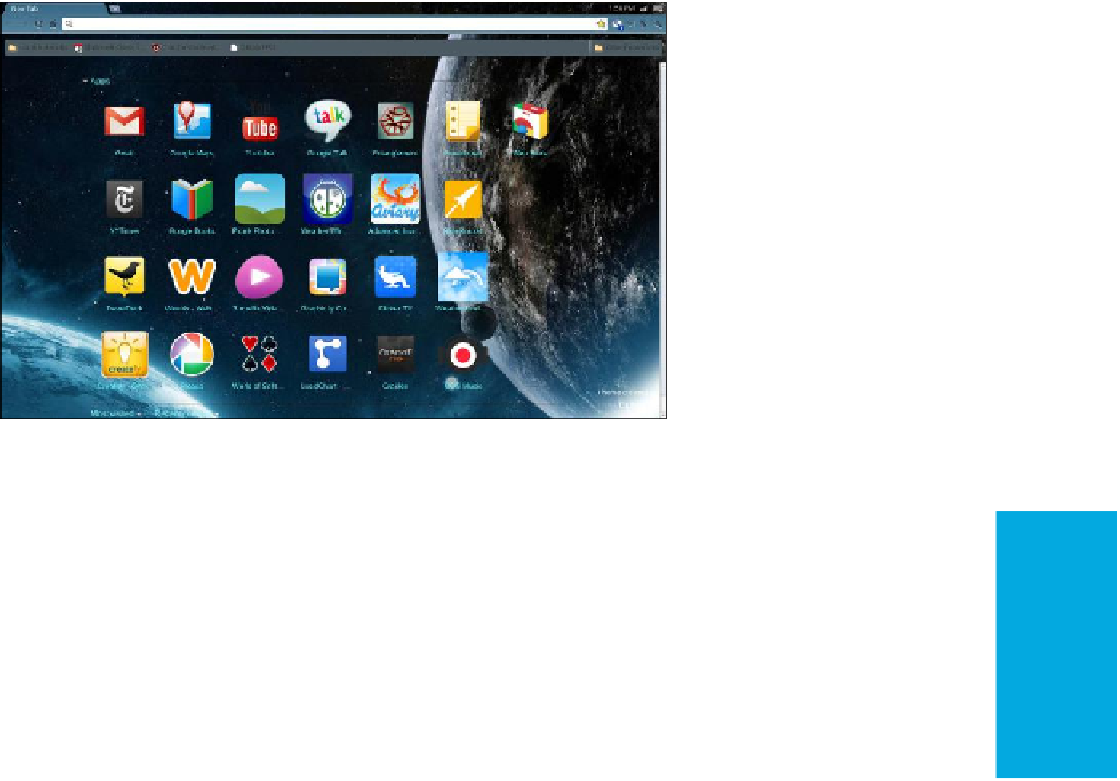Information Technology Reference
In-Depth Information
Figure.4 7
Google Chrome OS.
New Thin Client Operating Systems
Chrome OS is far from the only operating system for thin web clients. Several other open-source operating systems
have recently been released, such as Haiku (
www.haiku-os.org
), openThinClient (
openthinclient.org
), and
ThinStation (
www.thinstation.org
). These operating systems require less powerful computers than Windows
or Mac OS X because they are leaner and have fewer features. Using a thin client operating system on an older
computer can make it perform better when doing activities like browsing the web or managing email. The downside of
using a non-standard operating system is that few applications are available for it, so you may be limited to the applica-
tions that come with it (usually a text editor, a web browser, an email program, and a music player, at the minimum).
Operating Systems for.Tablets
and.Smartphones
Tablets and smartphones have special operating system needs. They
use solid-state storage, which is expensive, so the amount of storage
space is limited. Therefore, a large operating system is impractical; the
operating system must be simple, easy to use, and above all, compact in
size. The operating system comes preinstalled on a static memory chip
on tablets and smartphones, so these platforms are often referred to
as
system-on-chip (SoC)
. A separate memory chip (or set of chips) is
used to hold the data you create and the extra applications you install.
system-on-chip (SoC)
An operating system
that comes preinstalled on a chip on a portable
device such as a smartphone.
For most of their capabilities, tablet and phone operating systems rely on
third-party applications (
apps
) purchased or downloaded for free from
an online store. Because users can freely select their own apps, there is no
need to provide lots of preinstalled apps with the operating system, and
each person's device can be customized for his or her preferred activities.
app
An application, such as for a personal com-
puter, tablet, or smartphone.
Portable Apple devices (iPhone and iPad) use an operating system called
iOS
. Its main advantage is its popularity—because it is so popular, thou-
sands of apps are available for it via the Apple Store. Figure 4.8 shows an
iPad screen with iOS as the operating system.
iOS
The Apple-created operating system for Apple
tablets and phones.



